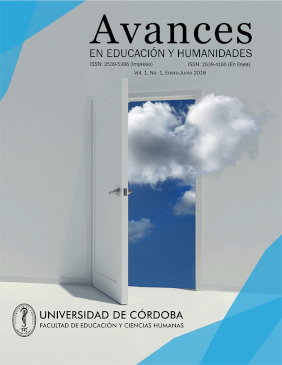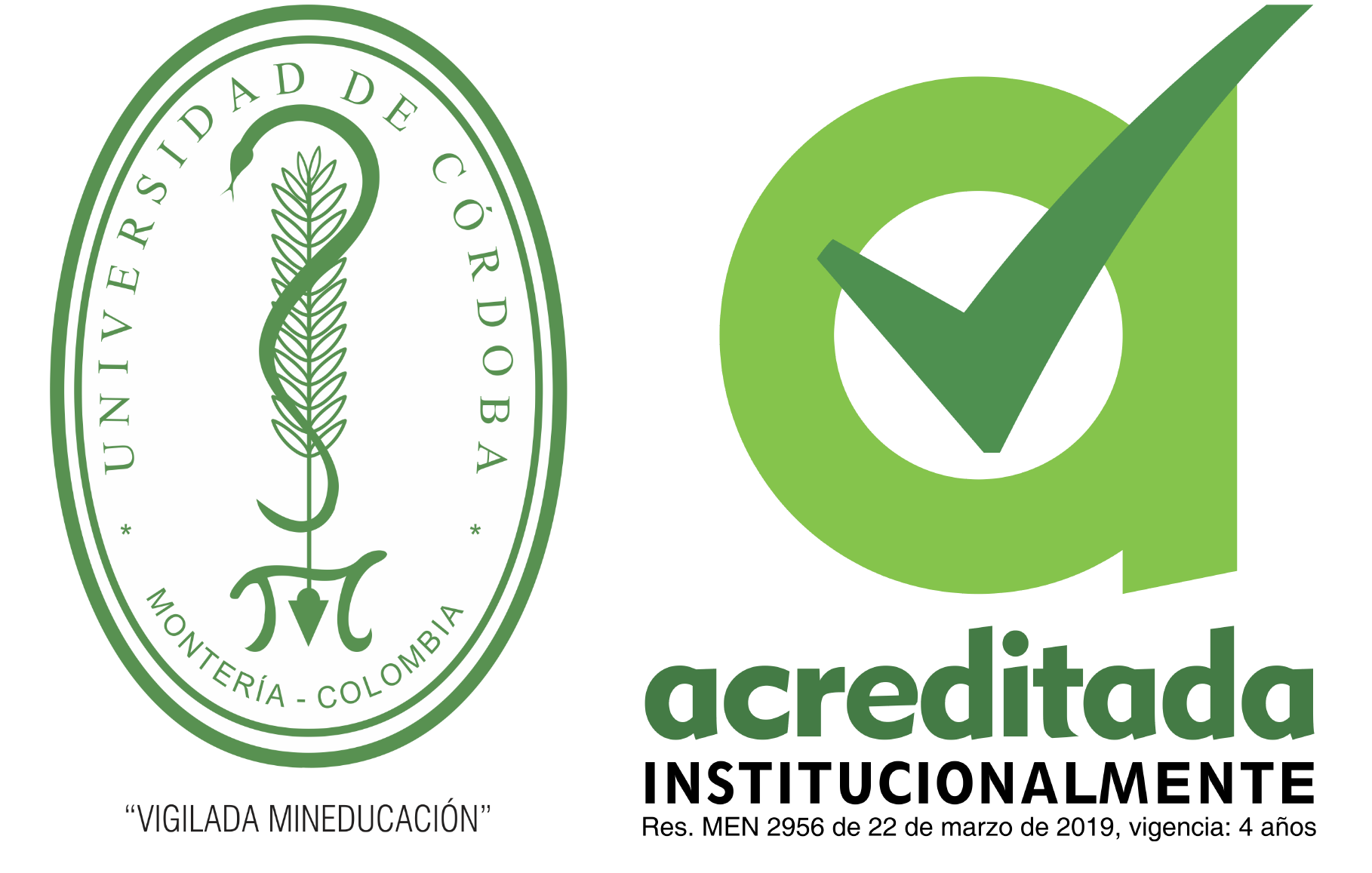English teachers’ attitudes toward inclusive education: a literature review
English teachers’ attitudes toward inclusive education: a literature review
Mostrar biografía de los autores
Este artículo reporta un análisis del estado del arte sobre las actitudes de los profesores hacia la educación inclusiva de niños con discapacidad. Este artículo analiza una variedad de investigaciones con el propósito de explorar los factores y las razones que pueden incidir en las actitudes de los profesores sobre la enseñanza a niños discapacitados. El análisis fue llevado a cabo para mostrar evidencia de las perspectivas positivas y negativas de los profesores hacía la inclusión. Durante todo el análisis, las actitudes de los profesores resultaron ser influenciadas por su filosofía general de inclusión y la percepción de como debería ser implementado este proceso. Después de discutir los resultados de los estudios analizados, se encontró que las actitudes positivas o negativas dependía de una variedad de factores como el conocimiento de educación inclusiva, tiempo, recursos y desarrollo profesional.
Palabras Claves: Inclusión, Politicas, y Actitudes
Abstract
This paper reports a review of literature concerning the attitudes of teachers toward inclusive education of children with disabilities. This paper reviews a large body of research-based literature, in order to explore the factors and reasons that might impact teachers’ attitudes concerning the teaching of disabled children. The analysis was carried out to show evidence of positive and negative views of teachers towards inclusion. Throughout the analysis, teachers’ attitudes were found to be influenced by their general philosophy of inclusion and the way they perceived that inclusion should be implemented. After analyzing the results of various research studies, it was found that teachers’ positive or negative attitudes depended on many factors such as knowledge toward inclusive education, time, resources and professional development.
Key words: Inclusion, policies and teachers’ attitudes
Visitas del artículo 1770 | Visitas PDF
Descargas
- International journal of Wholeschooling. 3 (1), 1-24.
- Al Zyoudi, M. (2006). Teachers’ Attitudes towards inclusive education in Jordanian schools.International Journal of Special Education, 21 (2), 55-63.
- Australia Ministry of Education and Training. (2005). Disability Standards for Education. Canberra, Australia: Ministry of Education and Training.
- Avramidis, E., Bayliss, P., & Burden, R. (2000). A survey into mainstream teachers’ attitudes towards the inclusion of children with special education needs in the ordinary school in one local education authority. Educational Psychology, 20(2), 191-225.
- Beh-pajooh, A. (1992).The effect of social contact on college teachers’ attitudes towards students with severe mental handicaps and their educational integration. European Journal of Special Needs Education, 7,(2) 231–236.
- Bender, W. N., Vail, C. O., & Scott, K. (1995). Teachers Attitudes toward Increased Mainstreaming Implementing Effective Instruction for Students with Learning Disabilities. Journal of Learning Disabilities, 28,(2), 87-94.
- Blaz, D. (2013). Differentiated instruction: A guide for foreign language teachers. Larchmont, NY: Eye on Education.
- Bowman, I. (1986). Teacher-training and the integration of handicapped pupils: some findings from a fourteen nation Unesco study. European Journal of Special Needs Education, 1, (1), 29–38.
- Brownell, J., & Carrington, S. (2005). Opportunities for authentic experienced and reflection: A teaching program designed to change attitudes towards disability for pre-service teachers. Support for learning, 15, 99-105.
- Campbell, J., Gilmore, L., & Cuskelly, M. (2003). Changing student teachers’ attitudes towards disability and inclusion. Journal of Intellectual and Developmental Disability, 28(4), 369-379. http://dx.doi.org/10.1080/13668250310001616407
- Campos, M., Block, M., & Ferreira, J. (2015). Exploring teachers’ voices about inclusion in physical education: a qualitative analysis with young elementary and middle school teachers. Comprehensive psychology, 4, (4) 1-9.
- Carroll, A. (2003). Impact of teacher training in special education on the attitudes of Australia preservice general educators towards people with disabilities. Teacher Education Quarterly, 14, 39-60.
- Clough, P., & Lindsay, G. (1991). Integration and the Support Service: Changing roles in special education. Slough, UK: NFER.
- Dev, P.C., & Belfiore, P. (1996). Mainstreaming students with disabilities: Teacher perspectives in India: paper presented at the Annual International Convention of the Council of Exceptional Children, Orlando FL
- Eagly, A. H., & Chaiken, S. (1993). The psychology of attitudes. Fort Worth, TX: Harcourt Brace Jovanovich.
- Elliot, S. (2008). The effect of teachers’ attitude towards inclusion on the practice and success levels of children with and without disabilities in physical education. International Journal of Special Education, 23(3), 48-55.
- Ferguson, D. L. (1995). The real challenge of inclusion: Confessions of a “rabid inclusionist”. Phi Delta Kappan, 77: 281–7.
- Gelzheiser, L., & Meyers, J. (1996). Classroom teachers’ views of pull-in programs. Exceptionality, 6(2), 81.
- Gilmore, L., Campbell, J., & Cuskelly, M. (2003).Developmental expectations, personality stereotypes, and attitudes towards inclusive education: community and teacher views of Down syndrome. International Journal of Disability, Development and Education, 50(1), 67-78.
- Hall, T. (2002). Differentiated instruction. Wakefield, MA: CAST. Available: www.cast.org/publications/ncac/ncac_diffinstruc.html
- Heflin, L. J., & Bullock, L. M. (1999). Inclusion of students with emotional/behavioural disorders: A survey of teachers in general and special education. Preventing School Failure: Alternative Education for Children and Youth, 43(3), 103-120.
- Hogg, M., & Vaughan, G. (2005). Social Psychology (4th edition). London: Prentice-Hall, pp 150.
- Horne, P. E., & Timmons, V. (2009) Making it work: Teachers’ perspectives on inclusion. International Journal of Inclusive Education, 13(3), 273-286.
- Inter-Agency Commission. (1990). World declaration on Education for All and framework for action to meet basic learning needs. ERIC Clearinghouse.
- Jelas, Z. M. (2010). Learner Diversity and Inclusive Education: A New Paradigm for Teacher Education in Malaysia. International Conference on Learner Diversity 2010. Procedia Social and Behavioral Sciences, 7(C), 201–204. www.sciencedirect.com
- Kern, E. (2006). Survey of Teacher Attitude Regarding Inclusive Education Within an Urban School District. PCOM Psychology Dissertations. Paper 70. Available:http://digitalcommons.pcom.edu/cgi/viewcontent.cgi?article=1069&context=psychology_dissertations
- Kleinert, H. L., Miracle, S., & Sheppard-Jones, K. (2007). Including students with moderate and severe intellectual disabilities in school extracurricular and community recreation activities. Intellectual and developmental disabilities,45(1), 46-55.
- Koeze, P. A. (2007). Differentiated Instruction: The Effect on Student Achievement in an Elementary School: Master’s Theses and Doctoral Dissertations. Paper 31.
- Leroy, B., & Simpson, C. (1996). Improving student outcomes through inclusive education. Support for Learning, 11, (1),32–36.
- Leyser, Y., Kapperman, G., & Keller, R. (1994). Teacher attitudes towards mainstreaming: A cross-cultural study in six nations. European Journal of Special Needs Education, 9, 1-15.
- Leyser, Y., & Tappendorf, K. (2001). Are attitudes regarding mainstreaming changing? A case of teachers in two rural school districts. Education, 121, 751-61
- Lynn, S. G., & Lang, P, (2005). Disability Studies in Education: Readings in Theory and Method. New York: P. Lang, C.
- Mahmoud, M.., & Hassan, M. (2011). Preschool and primary school teachers’ attitudes towards inclusive education in Egypt: The role of experience and self-efficacy, Procedia - Social and Behavioral Sciences, 29, 2011, 976-985. http://dx.doi.org/10.1016/j.sbspro.2011.11.331.
- Maio, G., & Haddock, G. (2009).The psychology of attitudes and attitude change. Thousand Oaks, CA: Sage Publications
- Mapsea, A. J. (2006). Teachers’ views on providing for children with special needs in inclusive classrooms: a Papua New Guinea study (Thesis, Master of Special Education (MSpEd)). The University of Waikato. Retrieved from http://hdl.handle.net/10289/2391
- Mba, P. O. (1991). Elements of Special Education. Ibadan: Codat Publication Nigeria.
- Mastropieri, M. A., & Scruggs, T. E. (2004). The Inclusive Classroom: Strategies for Effective Instruction (2nd ed.). Upper SadIe River, NJ: Pearson-Merrill Prentice Hall.
- Mobilla, M. D. C. M. (2011). Experiencias de inclusión educactiva en Colombia: hacia el conocimiento útil. RUSC. Universities and Knowledge Society Journal,8(1), 43-65.
- Ogbue, R. M. (1995). Report of the Survey of special Education Facilities in Nigeria. Lagos Federal Government Press.
- Porter, G. L. (2008). Making Canadian schools inclusive: A call to action. Education Canada, 48(2), 62-64.
- Sharma, U., Forlin, C., Loreman, T. and Earle, C. (2006). Impact of training on pre-service teachers’ attitudes about inclusive education, concerns about inclusive education, and sentiments about persons with disabilities. International Journal of Special Education, 21 (2) 80-93.
- Stanovich, P. J., & Jordan, A. (2002). Preparing general educators to teach in inclusive classrooms: Some food for thought. The Teacher Educator, 37, 173-185.
- Subban, P. (2005). Understanding Educator Attitudes Toward the Implementation of Inclusive Education. Disability Studies Quarterly. 25, (2), 5-26.
- Thomlinson, C. A. (2000). Differentiation of Instruction in the Elementary Grades. ERIC Digest. ERIC Clearinghouse on Elementary and Early Childhood Education.
- Thomson, C., D., Jones, L., Walter, J., Moore, D,W., Anderson, A. et al. (2003). Resource teacherslearning and behavior : Collaborative problem solving to support inclusion. Journal of positive behavior interventions, 5 (2), 101-111.
- Unesco. (1994). The Salamanca Statement and Framework for action on special needs education: adopted by the World Conference on Special Needs Education; Access and Quality. Salamanca, Spain, 7-10 June 1994. Unesco.
- Unesco. (1999) (in preparation). Inclusion in Education and National Development: Case Study on Romania.
- United Nations. (2007). Convention on the Rights of Persons with Disabilities, art 24.
- United Nations. General Assembly Resolution 61/295. (2007). United Nations Declaration on the Rights of Indigenous Peoples. New York, UN Headquarters.
- Villa, R., Thousand, J., Meyers, H. and Nevin, A. (1996). Teacher and administrator perceptions of heterogeneous education. Exceptional Children, 63, 29–45.
- Wischnowski, M. W., Salmon, S. J., & Eaton, K. (2004). Evaluating co-teaching as a means for successful inclusion of students with disabilities in a rural district. Rural Special Education Quarterly, 23(3), 3-14.
- Yara, P. O. (2009). students attitude towards mathematics and academic achievement in some selected secondary schools in southwestern nigeria. European Journal of Scientific Research .36(,3), 336.
- Zanna, M. P., &Rempel, J. K. (1988). Attitudes: A new look at an old concept. In D. Bar–Tal & W. Kruglanski (Eds.), The social psychology of knowledge (pp.315–334). Cambridge, UK: Cambridge University Press.
- Zihl, J. & Dutton, G.N. (2015). Cerebral Visual Impairment in Children: Visuo perceptive and Visuocognitive Disorders. New York: Springer.


